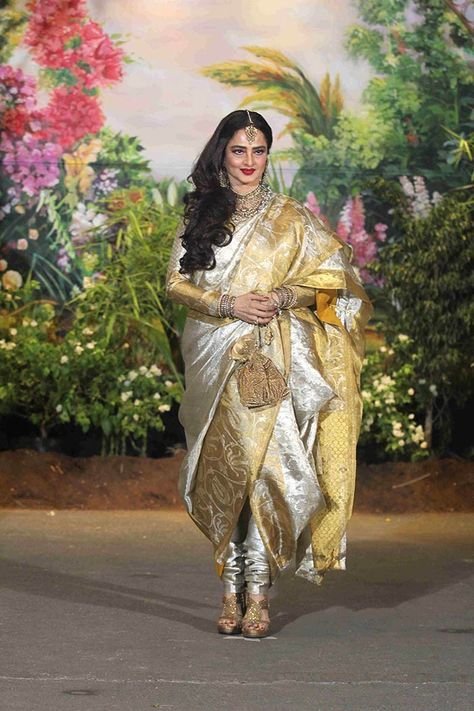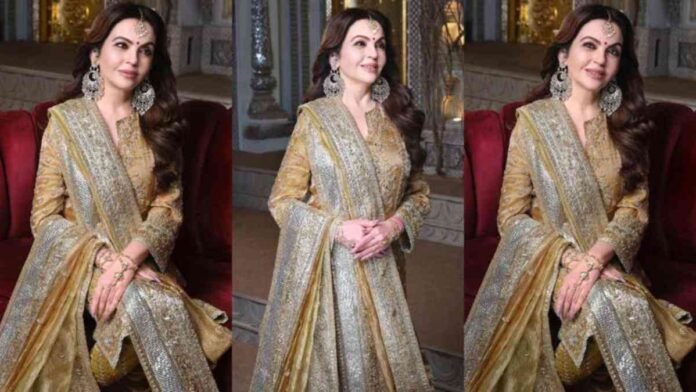The global fashion landscape is going crazy over the Indian traditional craftsmanship of the classic Hyderabadi khada dupatta. Recently, social media has been abuzz with images of big socialites like Nita Ambani at her son’s wedding, showcasing this elegant ensemble by fashion designer Manish Malhotra. The mother of Anant Ambani dazzled in the classic royal Hyderabadi gold kurta sets, paired with an antique zari and zardozi embroidered khada dupatta to elevate the regality of her look. Since then, there has been a sudden curiosity among fashion enthusiasts about this attire.
Nita Ambani is not the only high-profile celeb to endorse this traditional attire at big events. Fashion icons like the legendary actress Rekha are also great appreciators of the Hyderabadi khada dupatta drapes. She has worn this unique double drape designed by Manish Malhotra, both for a photo shoot and for the wedding reception of Sonam Kapoor. Sania Mirza and Soha Ali Khan wore it as their wedding outfits.

The elegant Hyderabadi Khada Dupatta
If you are someone looking for a royal heritage look and ready to spend a good amount of money then this 17th century regal garment is for you. Known to be introduced first by Mughal queen Noor Jahan, and then by Begums of Nizam in Hyderabad, this 6-yard dupatta is worn with a Kurtini, a jacket or a sleeveless kurta, a choli with short sleeves worn beneath the kurta, and straight pyjamas.
The entire set can be in chiffon, Chandheri or Benarasi silk, with a net, chiffon or tissue dupatta on top.
Crafting a Khada Dupatta requires impeccable craftsmanship. Its elaborate design features extravagant hand embroidery of zari and zardozi using gold or silver threads. The intricate embroidery, luxurious fabrics, and detailed craftsmanship involved in creating a khada dupatta make it a statement piece in any wardrobe.
Why It Is Called Khada Dupatta:
The Khada (meaning: standing) Dupatta is a long, upright dupatta or veil which is draped in a distinctive style that exudes grace and sophistication. The unique draping style involves draping the dupatta in a way that it forms a standing pleat-like structure in front of the body. The dupatta is draped in a specific manner that requires patience and pins. Tuck the middle of the dupatta into the churidar at the waist. Pleat both ends, wrap around the back, and drape over the right shoulder. Finally, bring it under the right arm and drape it over the left shoulder.
Final words:
The khada dupatta’s elaborate draping style and its ability to seamlessly blend tradition with modernity make it a cherished choice for fashionistas. Its resurgence in the fashion world, promoted by celebrities and fashion icons, has renewed interest in this timeless attire, allowing it to be appreciated by a new generation of fashion enthusiasts.



